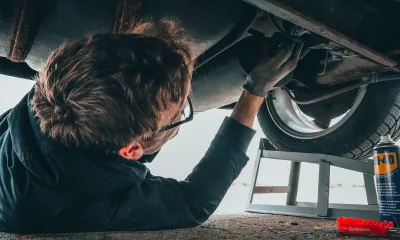
Chassis dynamometers are being used in the trade to ensure an engine is developing its full power, but the results these machines print out are often questionable. The operators are not able to control most of the variables that affect an engine’s output with any degree of certainty.
Engine dynamometers are far superior, because on a good set-up most of these variables can be controlled. Unfortunately, they have the major disadvantage that the engine has to be removed from the vehicle, mounted on a bed, and joined to the dyno by means of a shaft coupled to the engine’s flywheel.
My exposure to dynos started when at the age of 25 I joined Chrysler SA at their old Elsies River plant near Cape Town. I was to be the one and only dyno technician, tasked with testing engines for quality control as well as endurance running.
The dynamometer was a second-hand hydraulic unit, installed in a small room inside the laboratory that also housed a paint technician and an industrial chemist. I sat outside the room but could see the engine and dyno through a small window. The dyno consisted of a 600 mm diameter vaned rotor encased inside a housing mounted on bearing pedestals. One end of a universal-jointed shaft was coupled to a flange at the exit of the rotor from the housing. The other end was bolted to the engine’s flywheel.
The dyno housing was supplied with municipal water via a remote tap as well as a water level control on the housing that regulated how much water was leaving. This was necessary because the water flowed through, picked up heat from the movement, and flowed out again. If the water stayed inside the housing it would start to boil quite quickly. When the engine was running the rotation of the rotor in the water applied a load to the engine. This load was adjustable by controlling the amount of water entering and leaving the dyno housing. The housing tried to rotate with the impeller but was restrained by a load cell on the end of an arm. In this way the load on the engine could be measured. The rotational speed of the shaft was measure by a tachometer.
This very primitive dyno worked very well, but testing was often curtailed because the dyno infrastructure was even more basic. For example, the engine’s fan could not create enough airflow to enable us to use a car radiator for cooling. (This is a major problem on a chassis dyno.) Instead, we used a large oil drum to house the engine’s cooling water, and fitted a cold-water feed, controlled by a thermostat, to keep the drum’s temperature at about 85 degrees C. This had the disadvantage that it would take up to 45 minutes of running the engine before all the water was warm enough to start testing.
To be continued…




